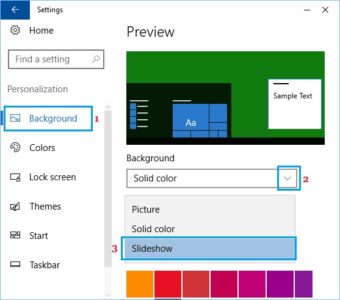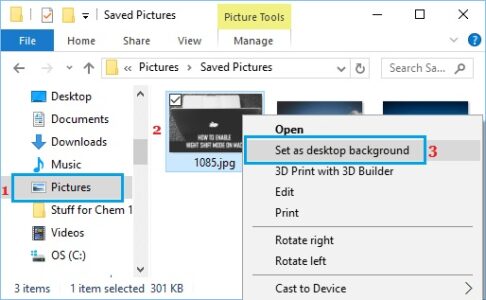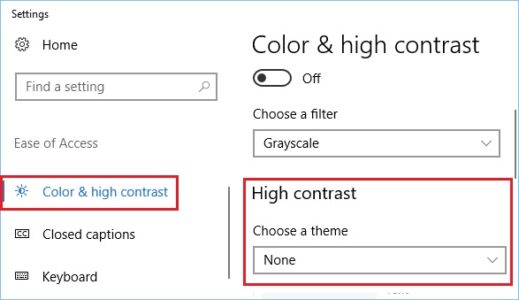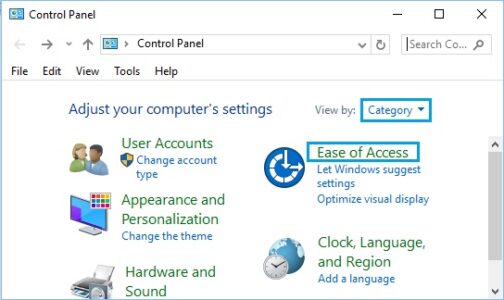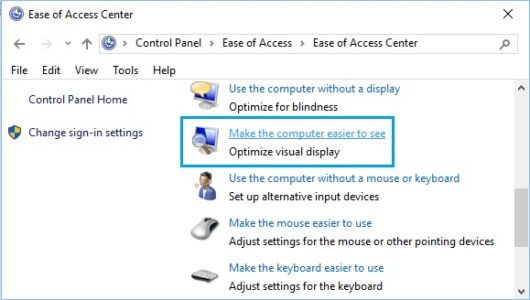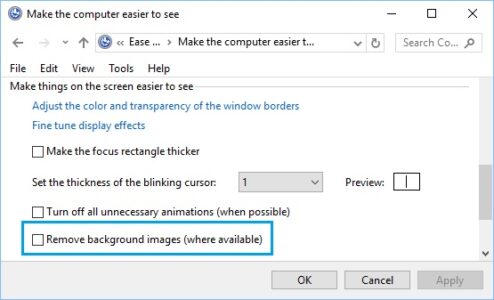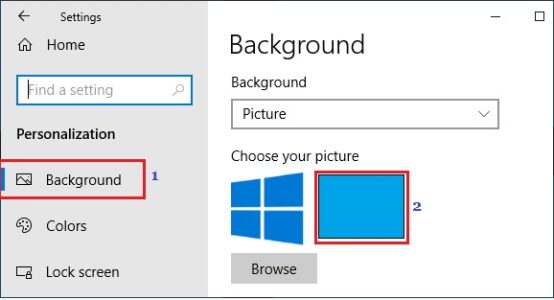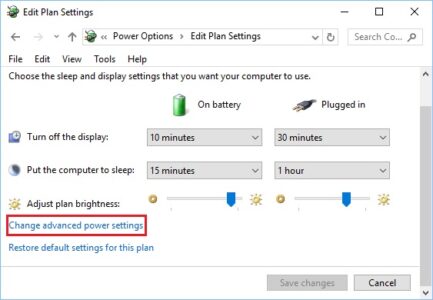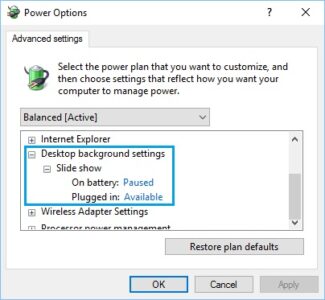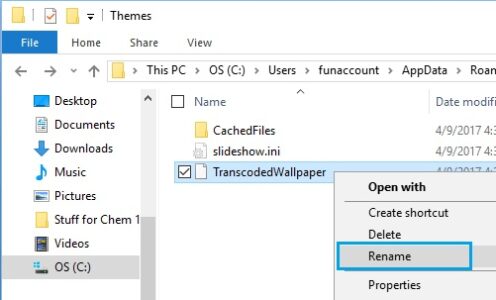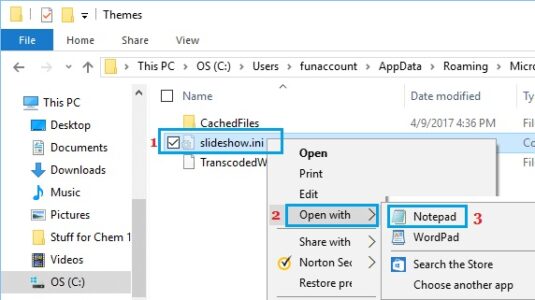It can be not very pleasant to find your computer suddenly displaying a dark wallpaper instead of its colorful view. So, the steps to Fix a Black Desktop Background in Windows 10 are listed below.
Fix: Black Desktop Background In Windows 10
The Colorful Desktop Wallpaper is such a standard feature in Windows computers that it is difficult to imagine a Windows PC without some Desktop Wallpaper or background image.
However, a Windows PC may occasionally display a Black Desktop Background. It usually occurs when attempting to change the desktop background image or the desktop background to Slideshow Mode.
Fortunately, the Black Desktop Background in Windows 10 is quite rare, and it can be resolved using any of the methods listed below.
1. Enable Show Windows Background Option
Follow the steps below to ensure that the “Show Windows Background” option is enabled on your computer.
1. Navigate to Settings > Ease of Access > Other Options in the left-hand pane. Next, make sure the Show Windows Background option is enabled in the right-pane.
2. Restart your computer, then check if your computer’s default Desktop Background has returned.
2. Switch Desktop Background Type
Switching to a different background type can sometimes solve a Black Desktop background in Windows 10.
1. Navigate to Settings > Personalization > Background in the left-hand pane. Next, change the Background type from Color/Picture to Slideshow in the right-pane.
2. Once the Slideshow Background is displayed, you can return to your original Color or Picture Background.
3. Replace Black Desktop Background With Picture
Replace the Black Desktop Background with any images available on your computer to quickly remove the black desktop background in Windows 10.
1. Right-click the Windows 10 Start button and select File Explorer from the menu that appears.
2. Go to Pictures or any other Folder or Location where you want to save an image as your Desktop Background.
3. In the contextual menu, right-click on the image and select Set as Desktop Background.
4. Unselect High Contrast Black
1. Navigate to Settings > Personalization > Colors in the left pane. Scroll down and click the High Contrast Settings link in the right pane.
2. On the following screen, set High Contrast Black to None.
5. Check Ease Of Access Settings
A Black Desktop Background in Windows 10 can also cause by an unintentional change in the Ease of Access Settings.
1. Go to your computer’s Control Panel.
2. On the Control Panel screen, select Category View and then click on Ease of Access.
3. Next, go to the Ease of Access Center and select Make the computer easier to see.
4. Scroll down to the bottom of the next screen and uncheck the Remove background images option.
5. Now, to save this setting, click Apply and OK.
ALSO SEE: Overwatch BN-564 Error
After that, go to Settings > Personalization > Background and select a Wallpaper of your choice to use as your computer’s background image.
6. Check Power Plan Settings
The Control Panel’s Power Settings can also cause the black desktop background in Windows 10.
1. Go to your computer’s Control Panel.
2. Now, on the Control Panel screen, make sure you’re in “Category” mode and then select the System and Security option.
3. Select Power Options from the System and Security Screen.
4. Click the Change Plan Settings link, which is located next to your computer’s current Power Plan.
5. Select the Change Advanced Power Settings option.
6. Expand the Desktop background settings item on the following screen and ensure that Slide Show is set to Available.
If the Slide Show option was deactivated, enable it and then set a Wallpaper of your choice by going to Settings > Personalization >Background.
7. Corrupt TranscodedWallpaper File
If none of the above workarounds work, the TranscodedWallpaper File on your computer is most likely corrupted.
1. Right-click the Windows 10 Start button and select File Explorer from the menu that appears.
2. Navigate to C: Users/User Account/AppData/Roaming/Microsoft/Windows/Themes Folder and Rename TranscodedWallpaper File to TranscodedWallpaper.old.
Note: If you’re unable to see the AppData folder, enable the Show Hidden Files option.
3. While still in the Themes Folder, open the Settings.ini file in Notepad, delete the contents (if any), and save it.
After completing the preceding steps, go to Settings > Personalization >Background to create a new Desktop Background on your computer.



